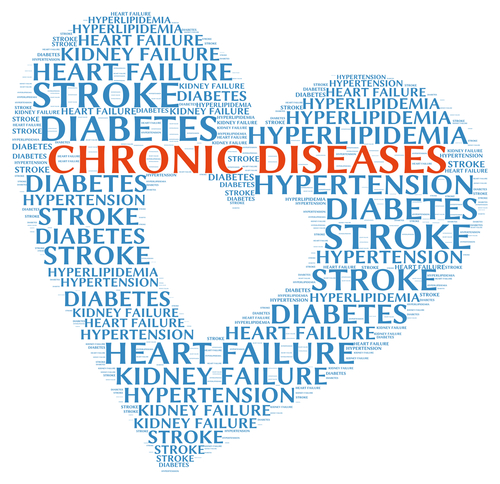Is India Chronically Sick?
M3 India newsdesk May 22, 2017
Chronic diseases are the major cause of death and disability worldwide.

In India, chronic or non-communicable diseases (NCD) are projected to account for 53% of all deaths, as reported by WHO (The World Health Organisation). WHO has released a report of 2015 Non-communicable Diseases (NCD) Global Survey according to which 1 in 4 Indians face the risk of death from an NCD before they hit the age of 70. With an increase in India’s aging population during the next 25 years, the total number of deaths will increase substantially; this increase will be largely attributable to chronic diseases.
India is currently experiencing the rise of four major chronic diseases: cardiovascular diseases (CVDs), diabetes mellitus, chronic obstructive pulmonary disease (COPD) and cancer; listed in descending order and as measured by their prevalence. All four of these diseases are projected to continue to increase in prevalence in the near future.
The major concern for India is that chronic ailments impact people at younger ages at a higher rate when compared to developed nations.
Behaviour Analysis
In an attempt to pinpoint the reasons for increasing burden of chronic illnesses a behaviour analysis was conducted and published in Lancet, vol. 377 (Jan 2011).
- According to this report, about 20% of the Indian population smoke daily. Tobacco use among the young, moreover the students from lower grades in urban schools seems to be increasing. According to the NFHS-3 (National Family Health Survey) report, the prevalence of smoking in men and women aged 15–49 was 32.7 % and 1.4% respectively. In the context of using tobacco in any form, the prevalence in males and females was 57% and 10.8% respectively.
- Rampant alcohol abuse is a major factor that contributes to the burden of chronic diseases. About 2·5% of men in the population report that they drink heavily (five or more standard drinks on at least 2 days in the previous week).
- Physical inactivity and obesity are largely prevalent a; 35% of a rural population and 56% of an urban population did not engage in sufficient physical activity.
- Raised body mass index (overweight and obesity) is an important cause of chronic disease. Prevalence of overweight in India is expected to increase in both men and women over the next 10 years 7·3% of the population are overweight and 1·2% of the population are obese. On comparing National Family Health Survey (NFHS)-2 (1998–99) with NFHS-3 (2005–06) report, the prevalence of overweight in females increased from 5.9% to 7.4% and of obesity from 0.9% to 1.3%.
- Indoor air pollution is another factor adding to the health burden. For cooking, more than 80% of the Indian population use solid fuel. Indoor air pollution from the use of solid fuel for cooking affects a quarter of urban households and nearly 90% of rural households.
The major risk factors for non-communicable diseases are smoking, alcohol abuse, a sedentary lifestyle, and an unhealthy diet. If these could be addressed adequately, 40–50% of non-communicable disease-related, premature deaths are preventable
What can help?
The Indian government has already started working in this regard. The global action plan 2014-2019 (GAP) has set 9 targets for countries to emulate. Taking a step further, India has set 10th target to address household air pollution -a major health hazard in the South-East Asian Region due to the burning of solid biomass fuel and passive smoke. By 2025, India's National Monitoring Framework for Prevention and Control of NCDs aims to achieve 50 percent relative reduction in the household use of solid fuel and a 30 percent relative reduction in the prevalence of current tobacco use. India has successfully implemented WHO's Framework Convention on Tobacco Control aimed at reducing the demand for tobacco products, now tobacco pictorial warnings cover 85 percent of the package.
There is an urgent need for healthcare professionals in India to orient the efforts towards prevention, screening, early intervention and new treatment modalities with the aim to reduce the burden of chronic disease. Awareness through mass media, community mobilization and initiatives can help in reduction of risk factors.
-
Exclusive Write-ups & Webinars by KOLs
-
Daily Quiz by specialty
-
Paid Market Research Surveys
-
Case discussions, News & Journals' summaries